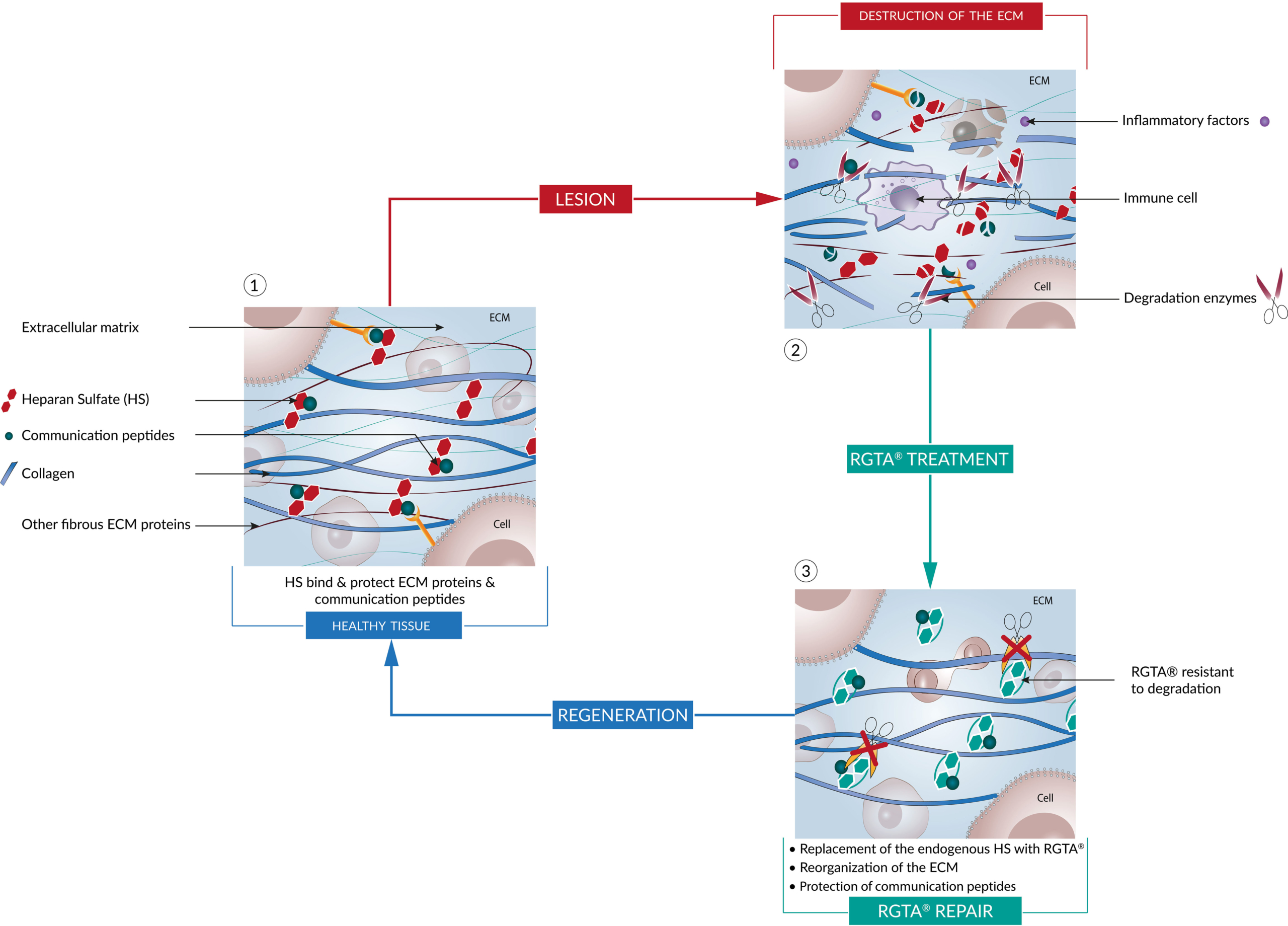RGTA® mode of action
Our ReGeneraTing Agents (RGTA®) technology is based on the central role of the extracellular matrix (ECM) in the repair and regeneration of tissue and organs.
This regeneration process is regulated by specific signals, communication peptides, present in the extracellular space, which are specifically stored, protected, and held in place by a polysaccharide family called heparan sulphates (HS). It forms a scaffold with matrix proteins (such as collagen, elastin, etc.) to create the ECM (Cf. scheme n°1).
During tissue lesions, enzymes are released, destroying these components, including heparan sulphates, leading to an accelerated degradation of communication peptides which are no longer protected (Cf. scheme n°2).
Example of RGTA in Cacipliq 20®
RGTA’s main action
RGTA® are polysaccharides (complex sugars). They are structural and functional biomimetics of natural heparan sulphates, but are resistant to degradation enzymes.
The primary action of RGTA® is to replace degraded heparan sulphates and, therefore, restore the ECM scaffold through direct physical interaction with proteins (collagens and glycoproteins). The resulting scaffold restoration helps to protect the communication peptides, improving better tissue regeneration (Cf. scheme n°3).
